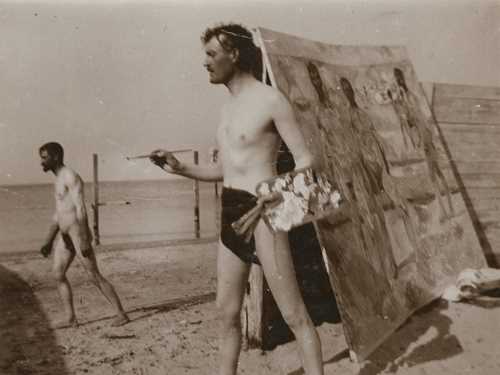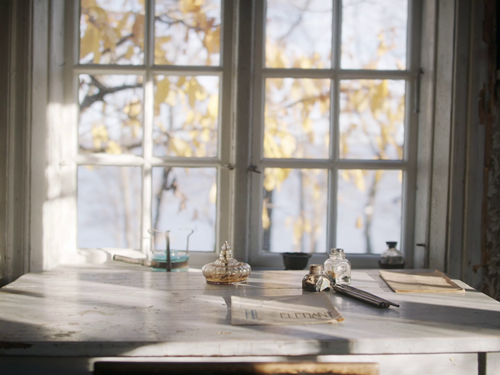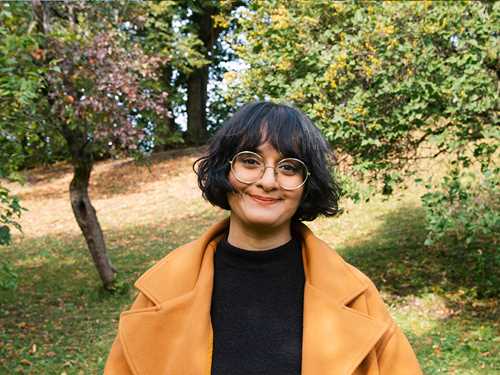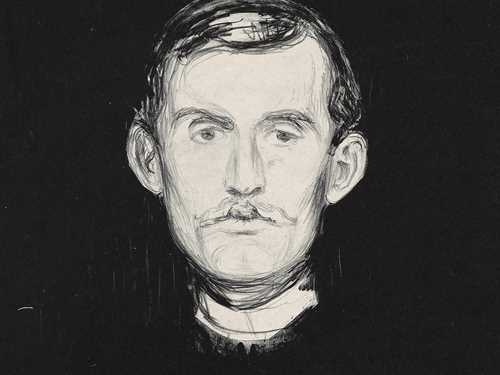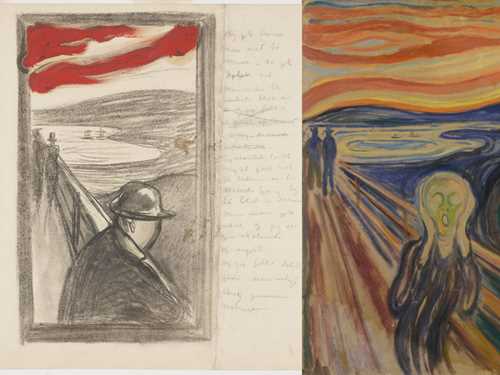Edvard Munch's travel chest
Munch’s chest reveals details and tells stories on his European journeys.
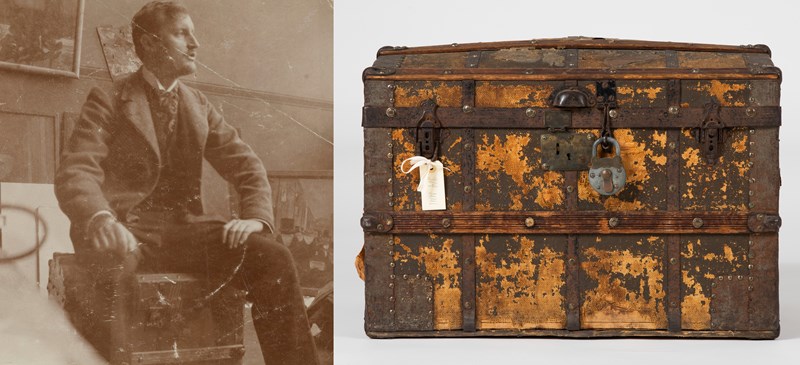
Photo © Munchmuseet
In the process of moving to the new MUNCH in Bjørvika, all objects in the MUNCH collection are examined and conserved in order to ensure that the condition will tolerate the move. If there is a risk of loss or further damage the objects are treated by the museum’s conservators before being packed down.
This is the case with, among other things, a travel chest which Edvard Munch used during his many travels in Europe.
Munch visited Dresden for the first time in 1893 at an early age of twenty years. He went to Berlin in 1902 where he bought a studio in Lützowstrasse 82. In the museum’s photo collection there are two photos of Munch in his Berlin studio, and in both he’s sitting on this very chest that’s now being conserved at MUNCH.
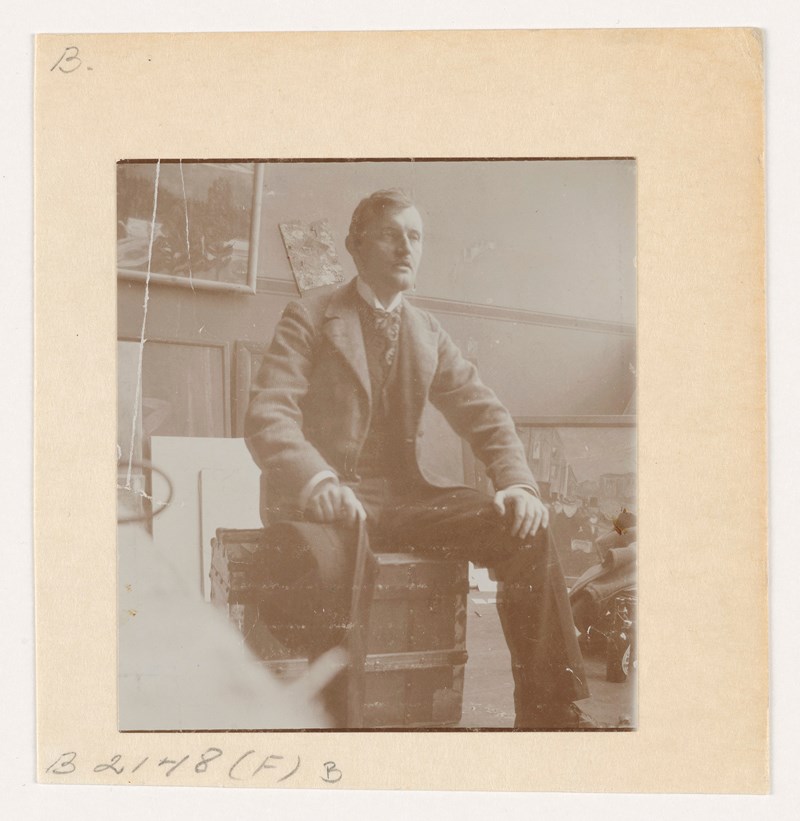
Edvard Munch: Edvard Munch on the trunk in his studio in 82 Lützowstrasse II. Photograph, 1902. Photo © Munchmuseet

Edvard Munch: Edvard Munch on the trunk in his studio in 82 Lützowstrasse I. Photograph, 1902. Photo © Munchmuseet
Resting in Bad Kösen
Between 1902 and 1908, Munch travelled a lot in Germany. The labels on the chest are providing interesting information about Munch’s destinations and intermediate stops during his travels in Germany – Dresden, Berlin and Bad Kösen.
See video: Art talk on Munch's relationship to the coast, nature and recreation
From 1905 to 1906 Munch rested in a Bad Kösen health resort, while treated for his nervous disorder. During this stay he even painted a famous and posthumously portrait of Nietzsche.
Edvard Munch: Friedrich Nietzsche. Oil and tempera on canvas, 1906. Photo © Munchmuseet
Conservators at work
The beautiful chest is stretched with painted canvas. The canvas clearly shows the ravage of time, indicating that the chest has been in extensive use. The paint is in many areas unstable and the canvas is torn and has numerous holes, particularly around the lock at the front.
The chest also have several torn and partly loose paper labels. There is a risk that the labels will suffer more damage and that the loose paint flakes will fall off if they are not secured.

Paper conservator Cosima Walter working on conservation of Edvard Munch's traveø chest. Photo © Munchmuseet
Paper conservator Cosima Walter is currently working on the conservation of the chest. To attach the loose paint flakes she applies Funori with a tiny brush. Funori is an adhesive made from Japanese seaweed. The key component of the glue is a unique polysaccharide starch and it is used by conservators as a fixative, cleaning agent or light adhesive. The benefits are that it dries up matt and is reversible with water.
The paper labels need to be softened before treatment; Cosima lightly moisten the paper before gluing it back to the canvas. The adhesive she is using is wheat starch. Tears in the labels are repaired with the same adhesive and thin Japanese paper.
100 objects from Munchs home at Ekely will be exhibited in the new MUNCH
Munch continued to travel to and around Germany in the years between 1910 and the late 1920s, and it has emerged that he possibly used chests like this to transport graphic works.
The travel chest will be exhibited in one of the permanent exhibitions in the new museum on Oslo's waterfront, an interactive experience where a total of 100 objects from Munch’s home at Ekely will give a unique insight into the life of one of the world’s most famous artists.
